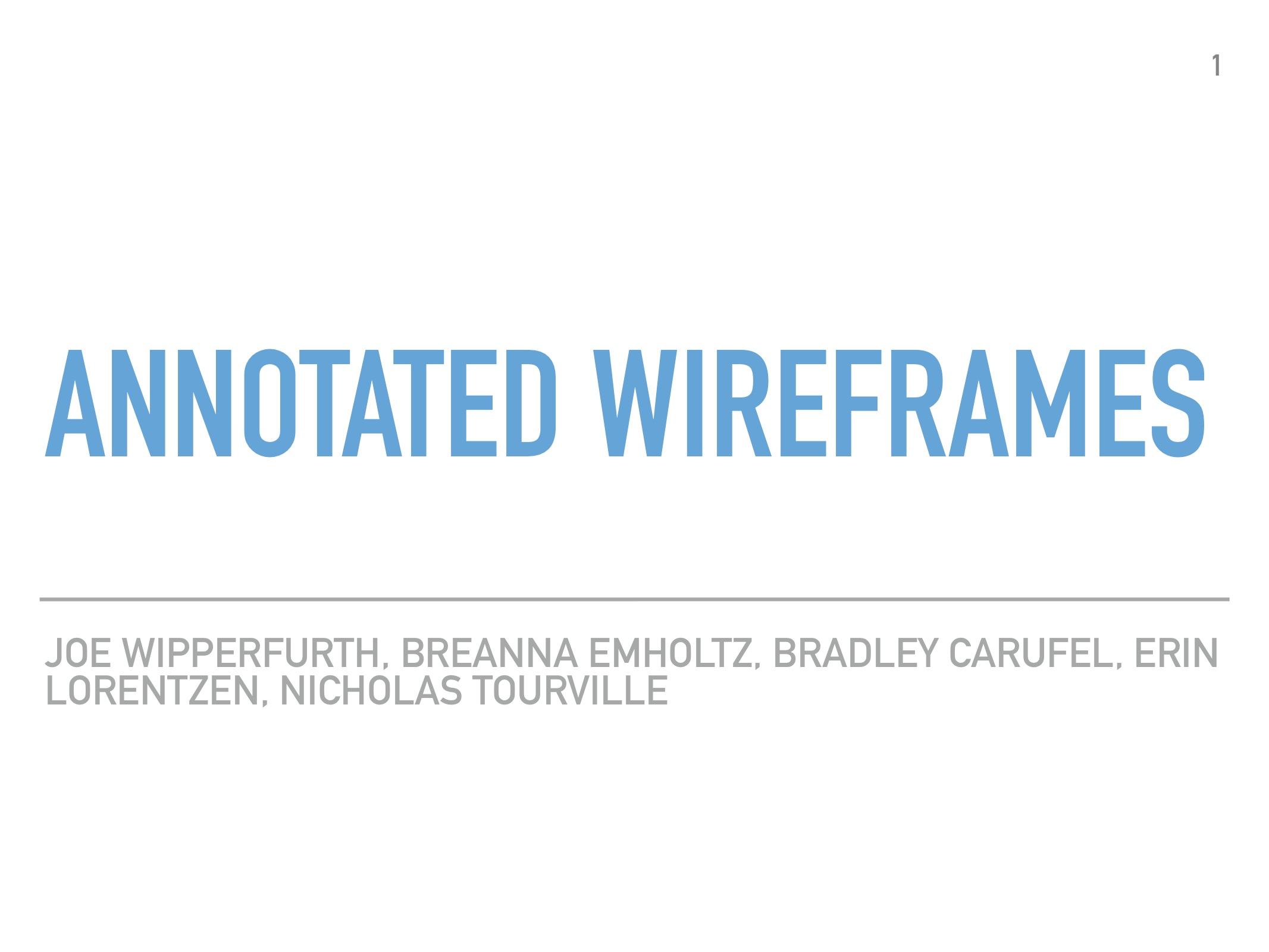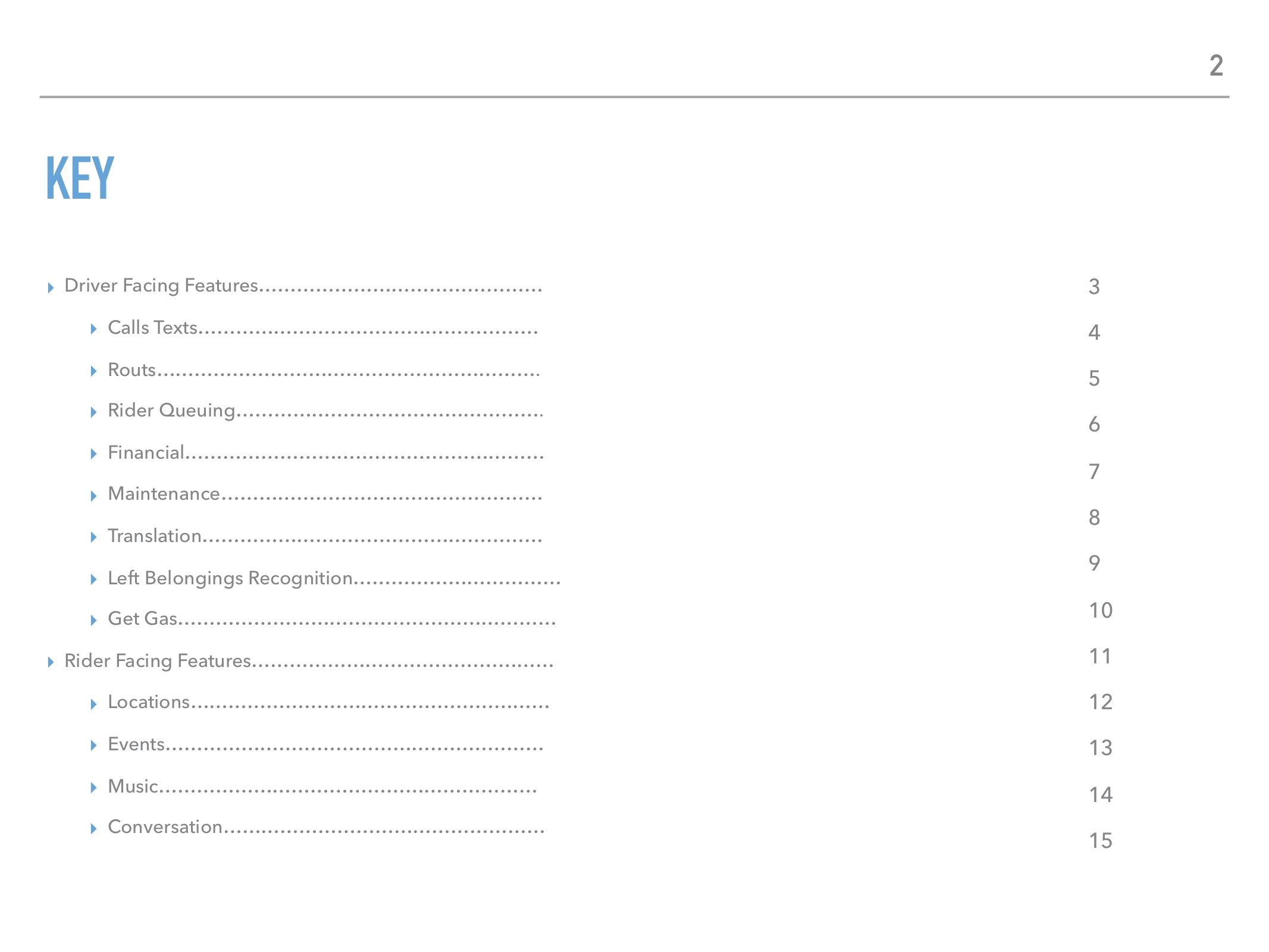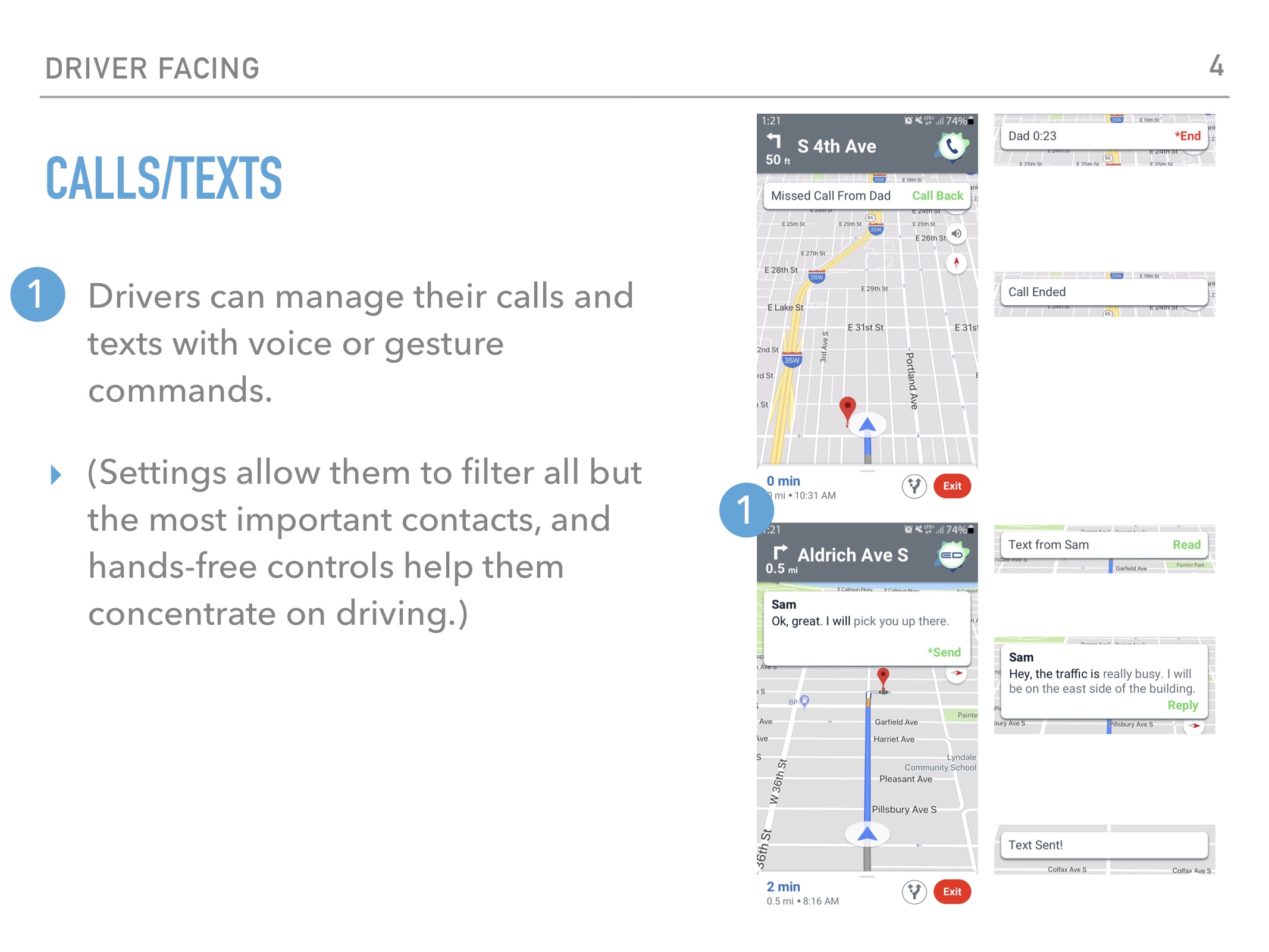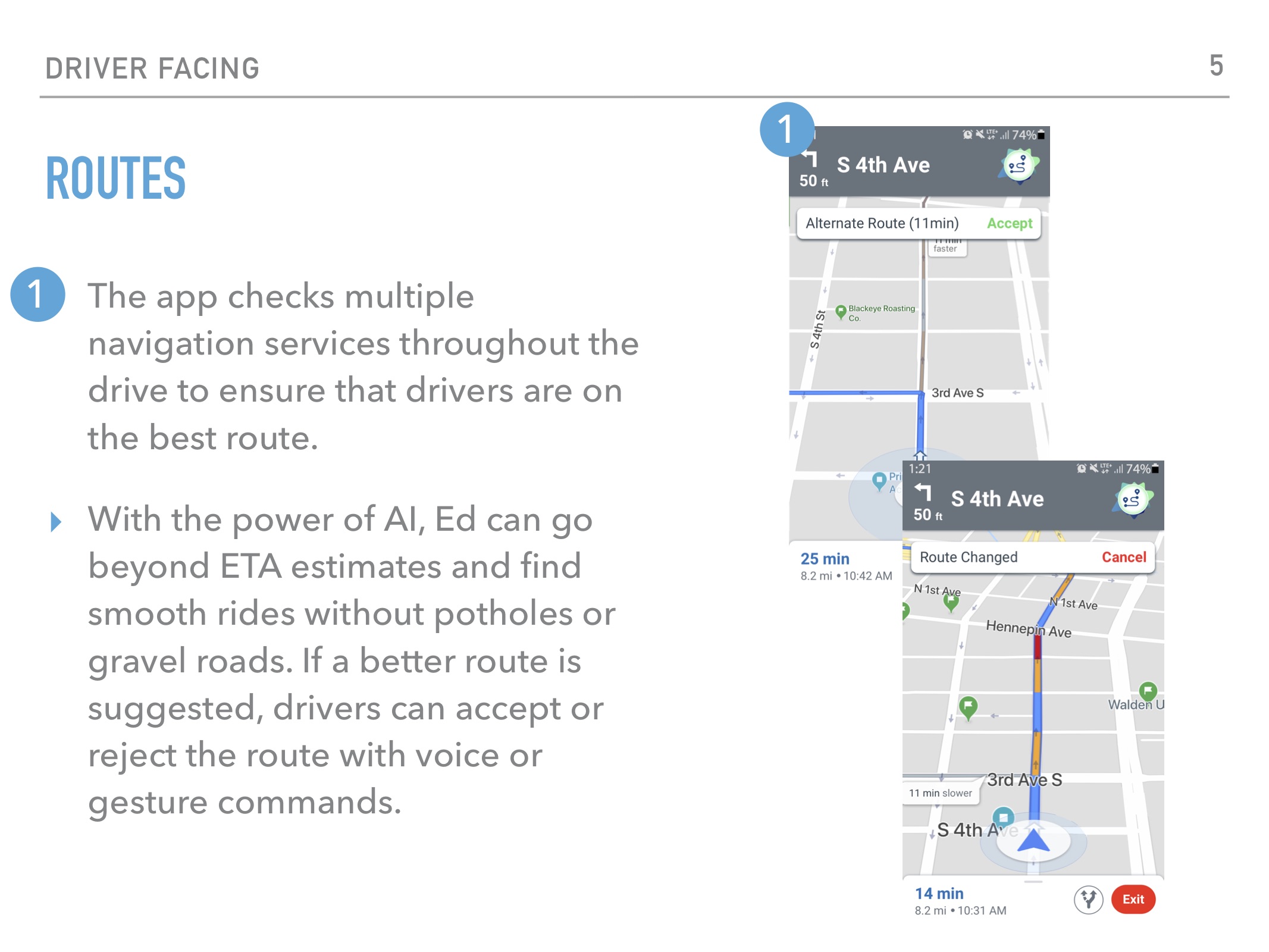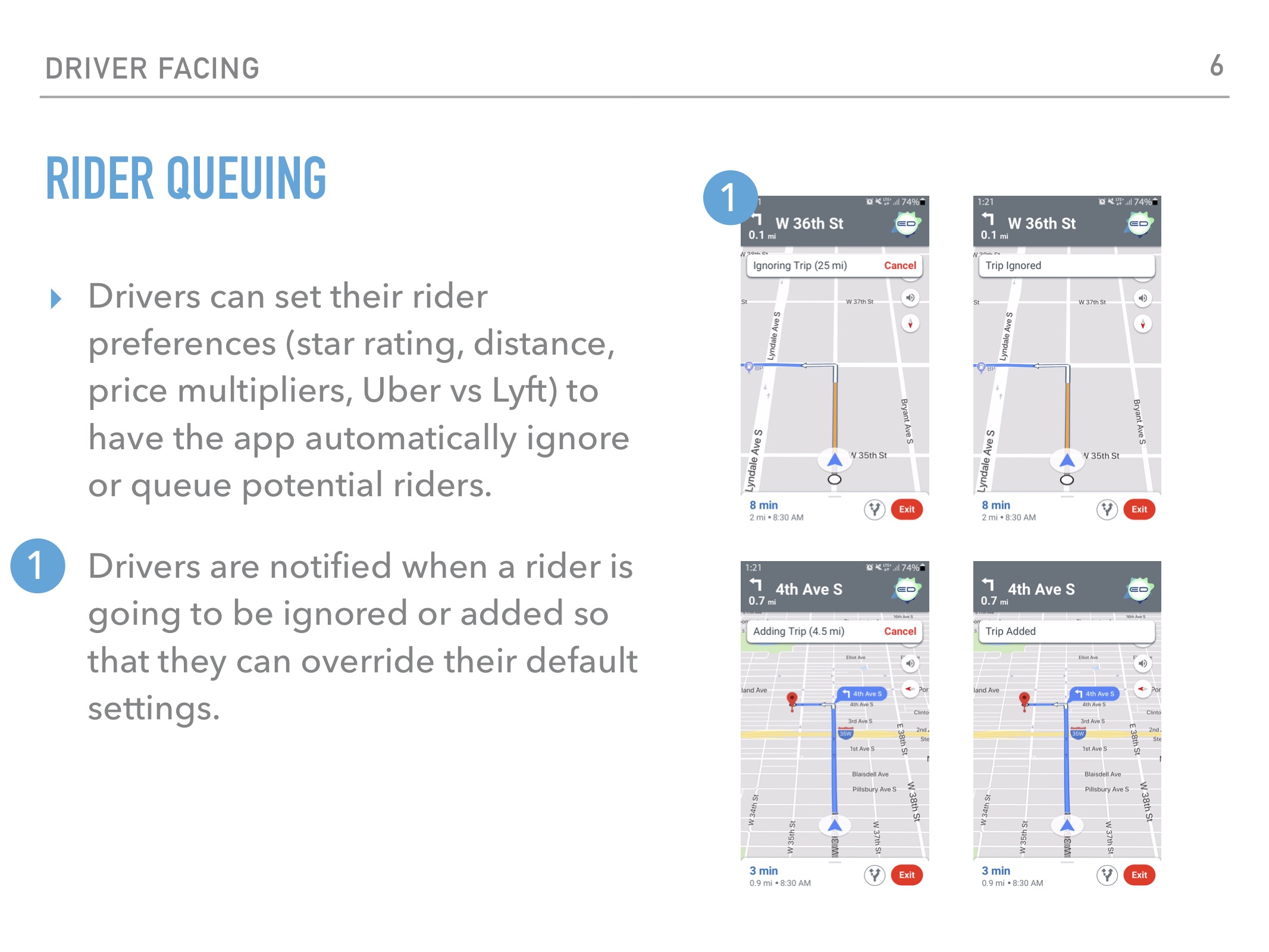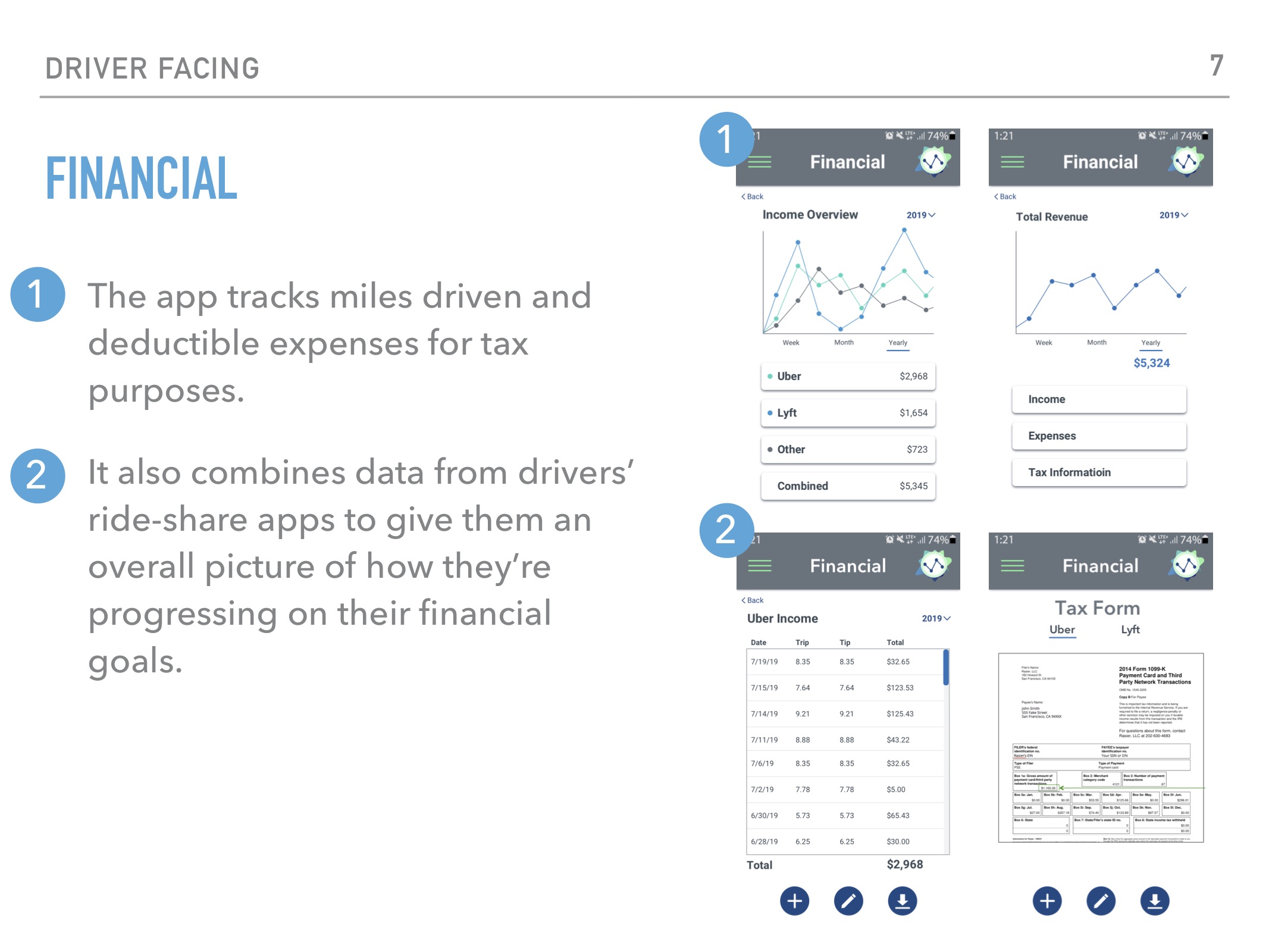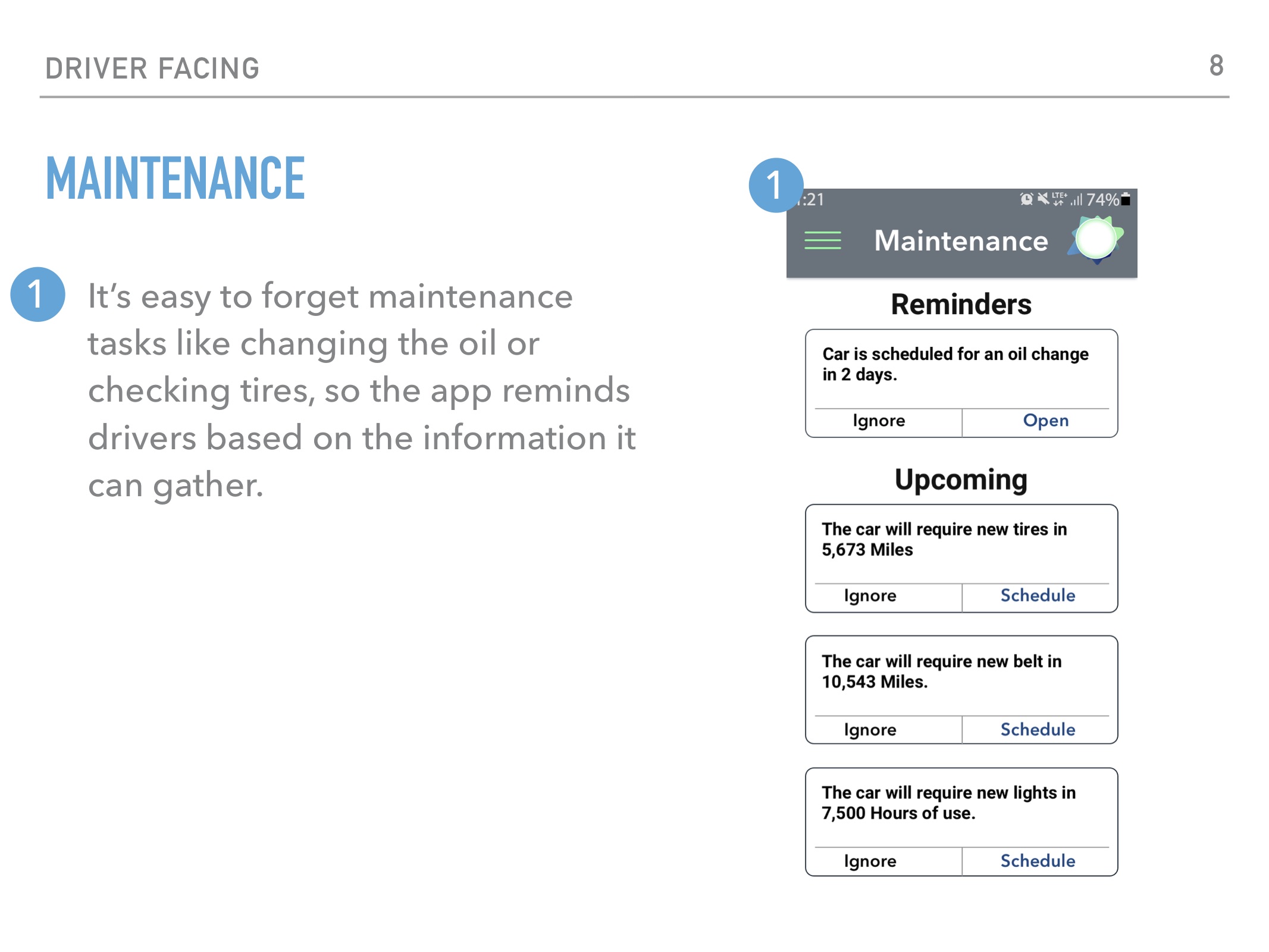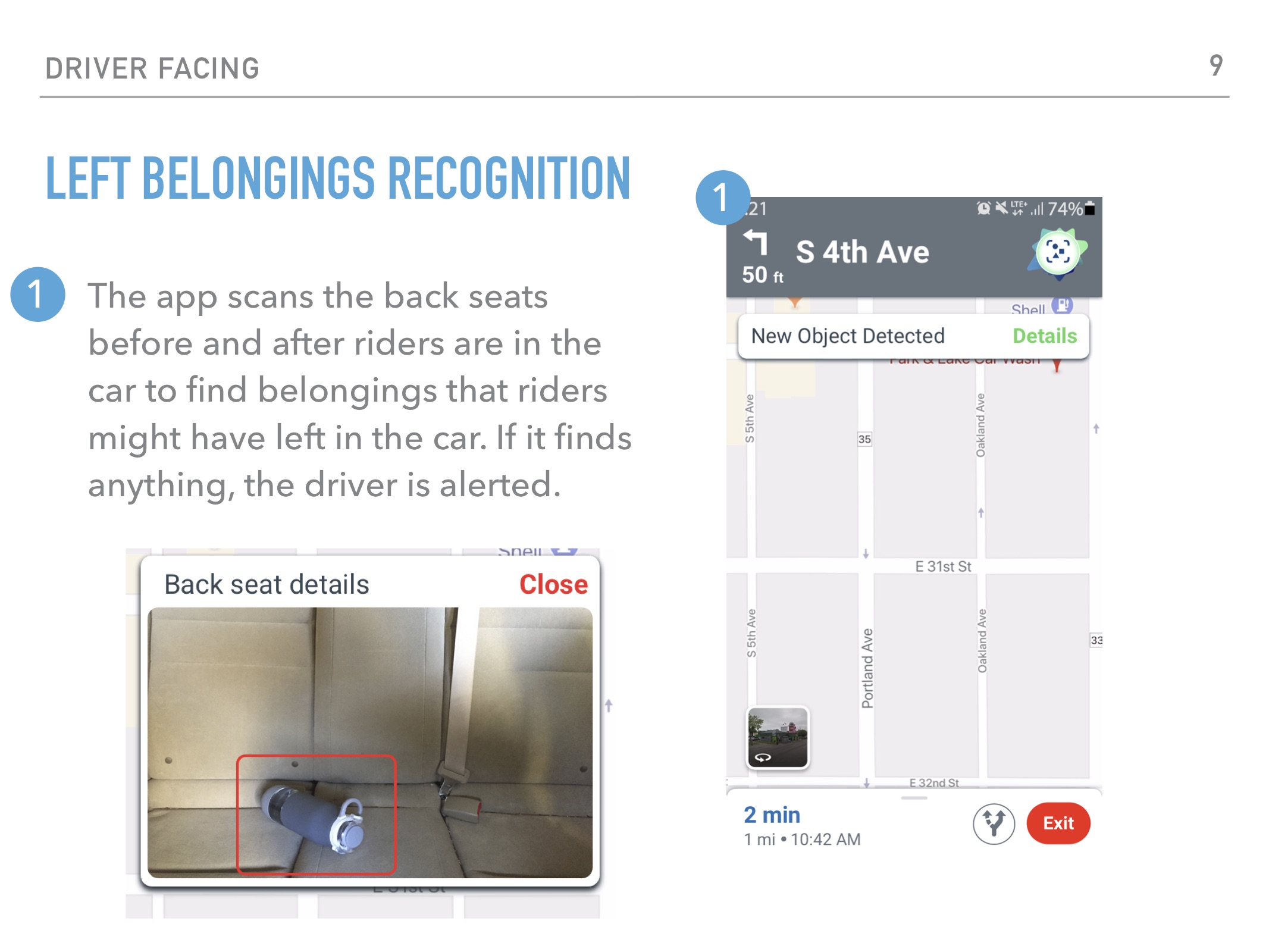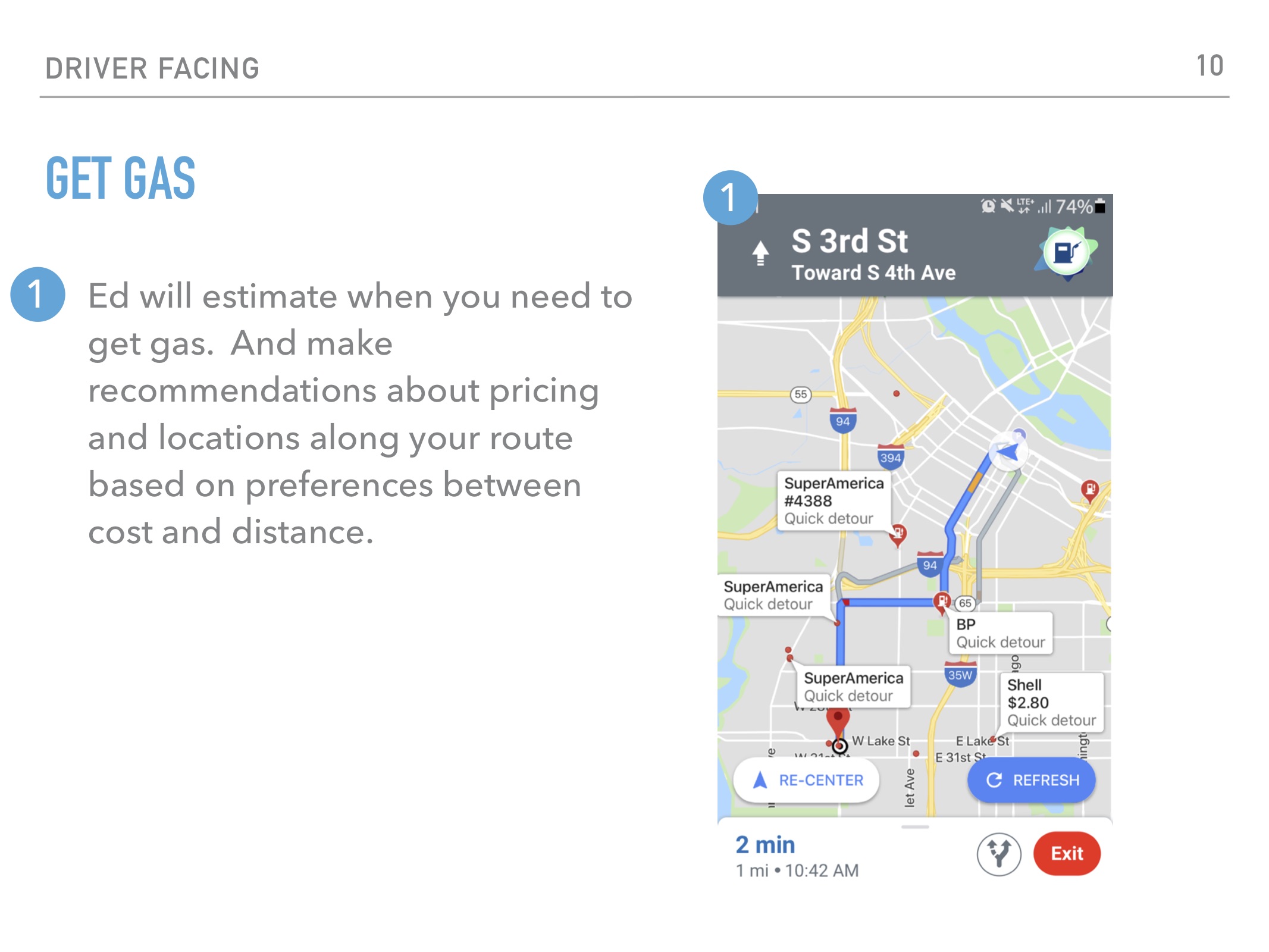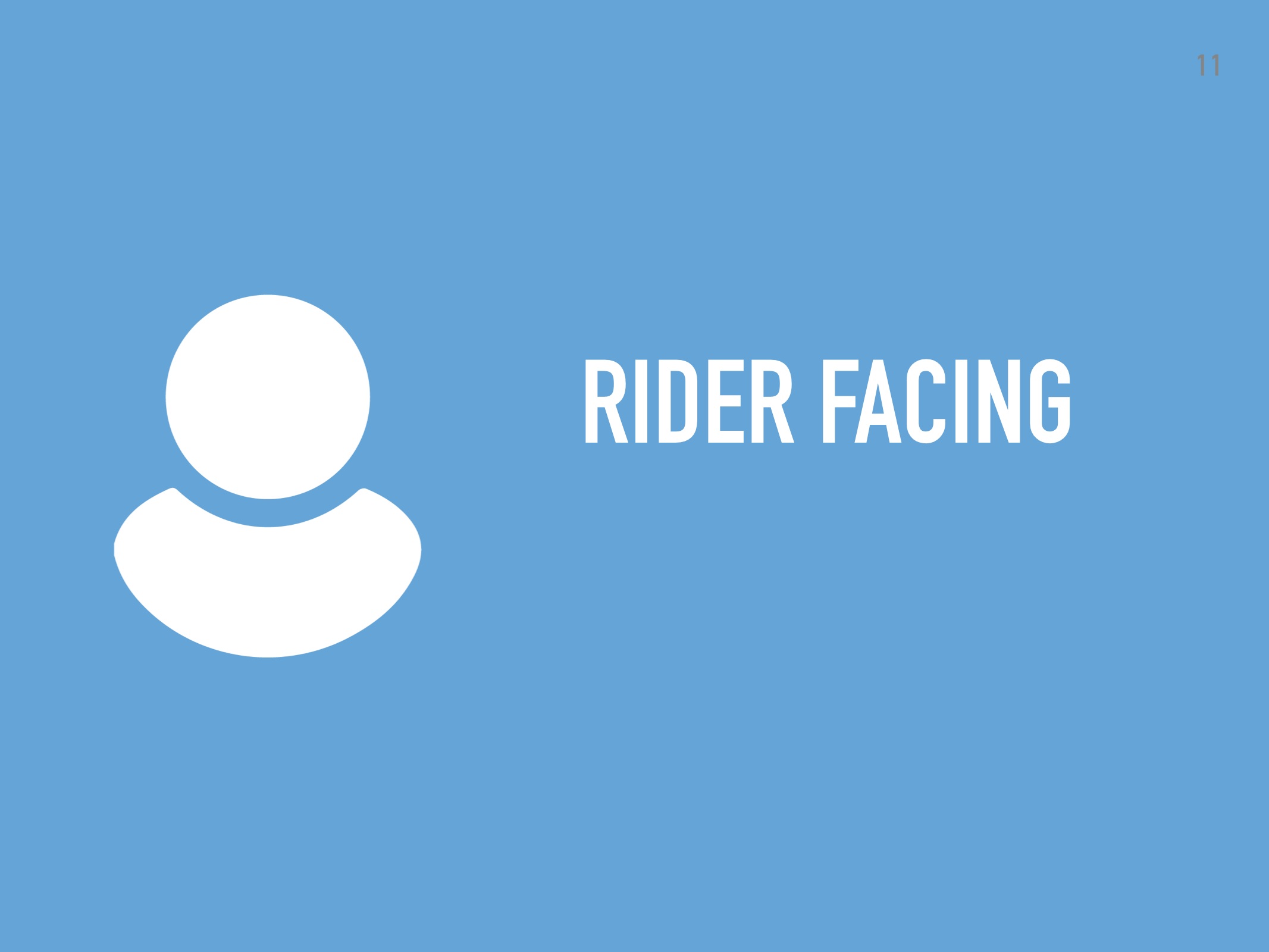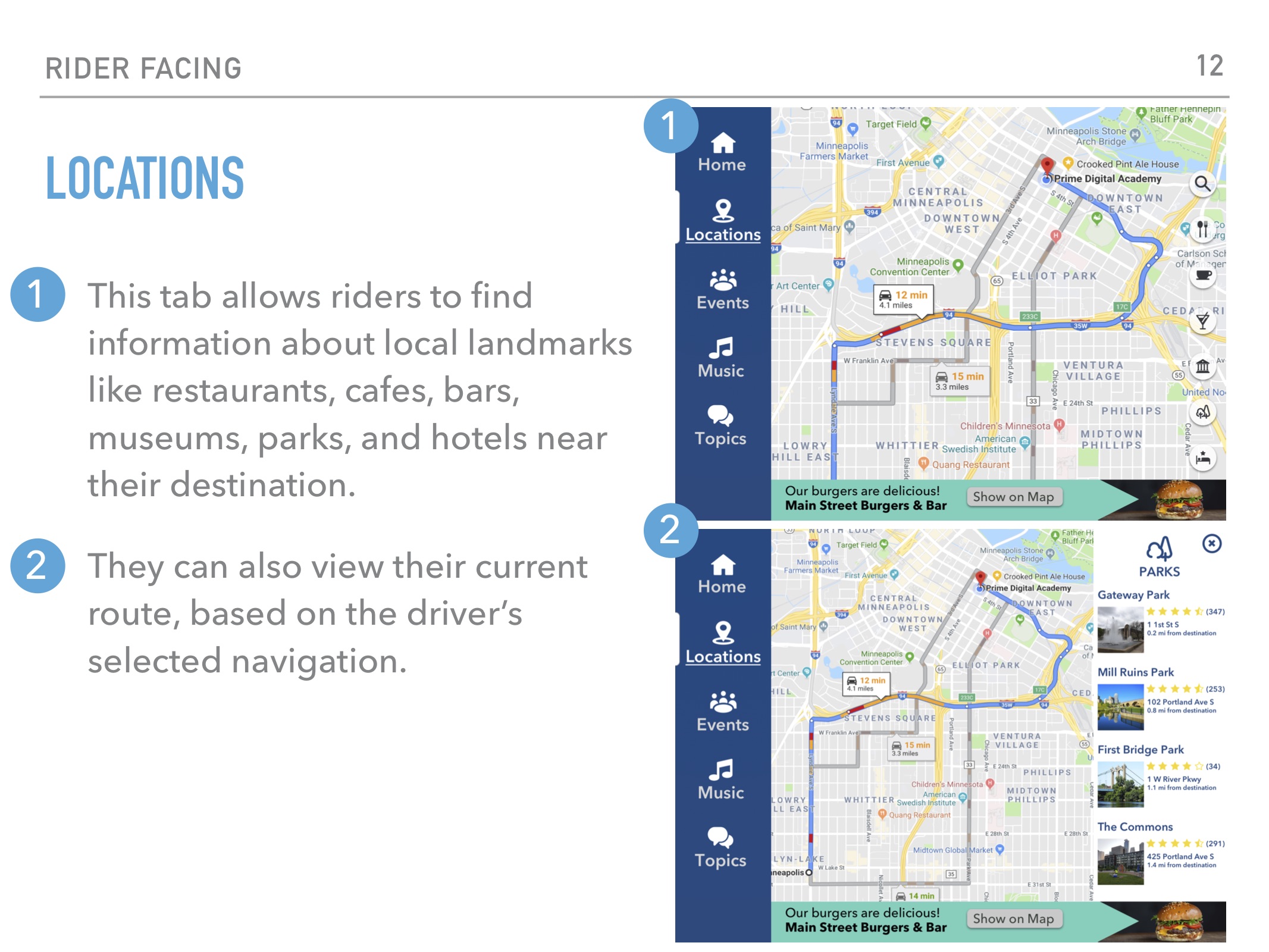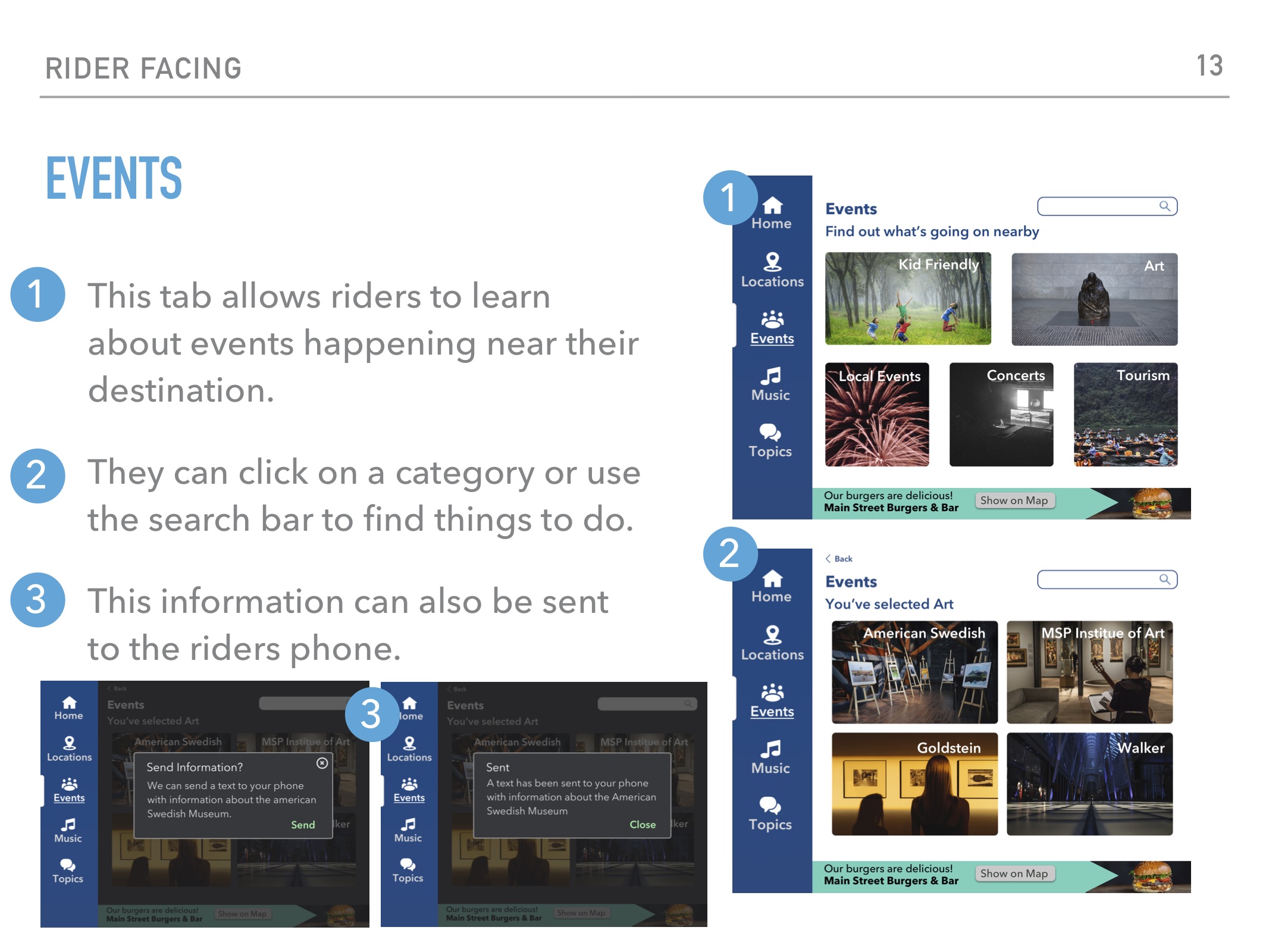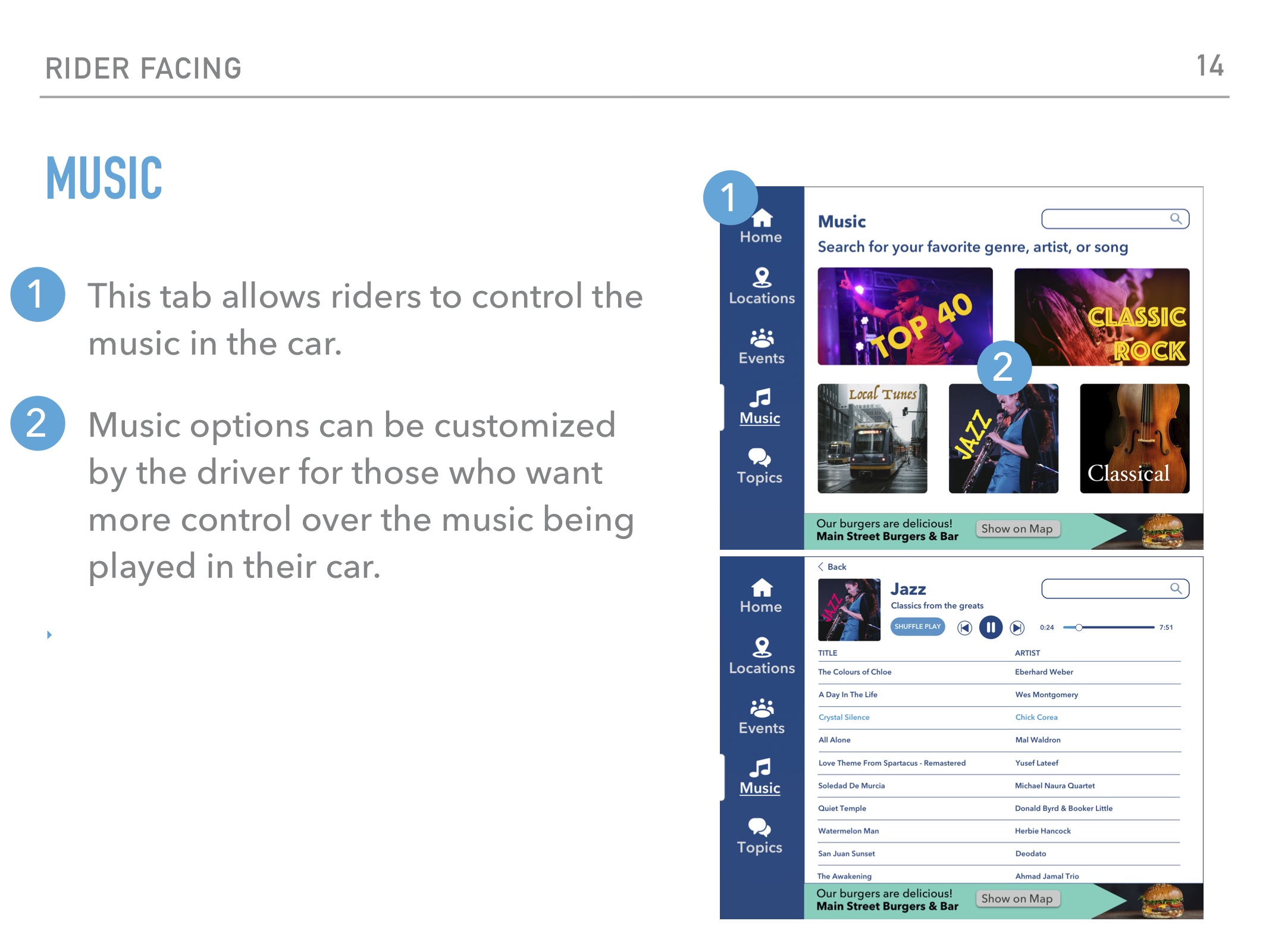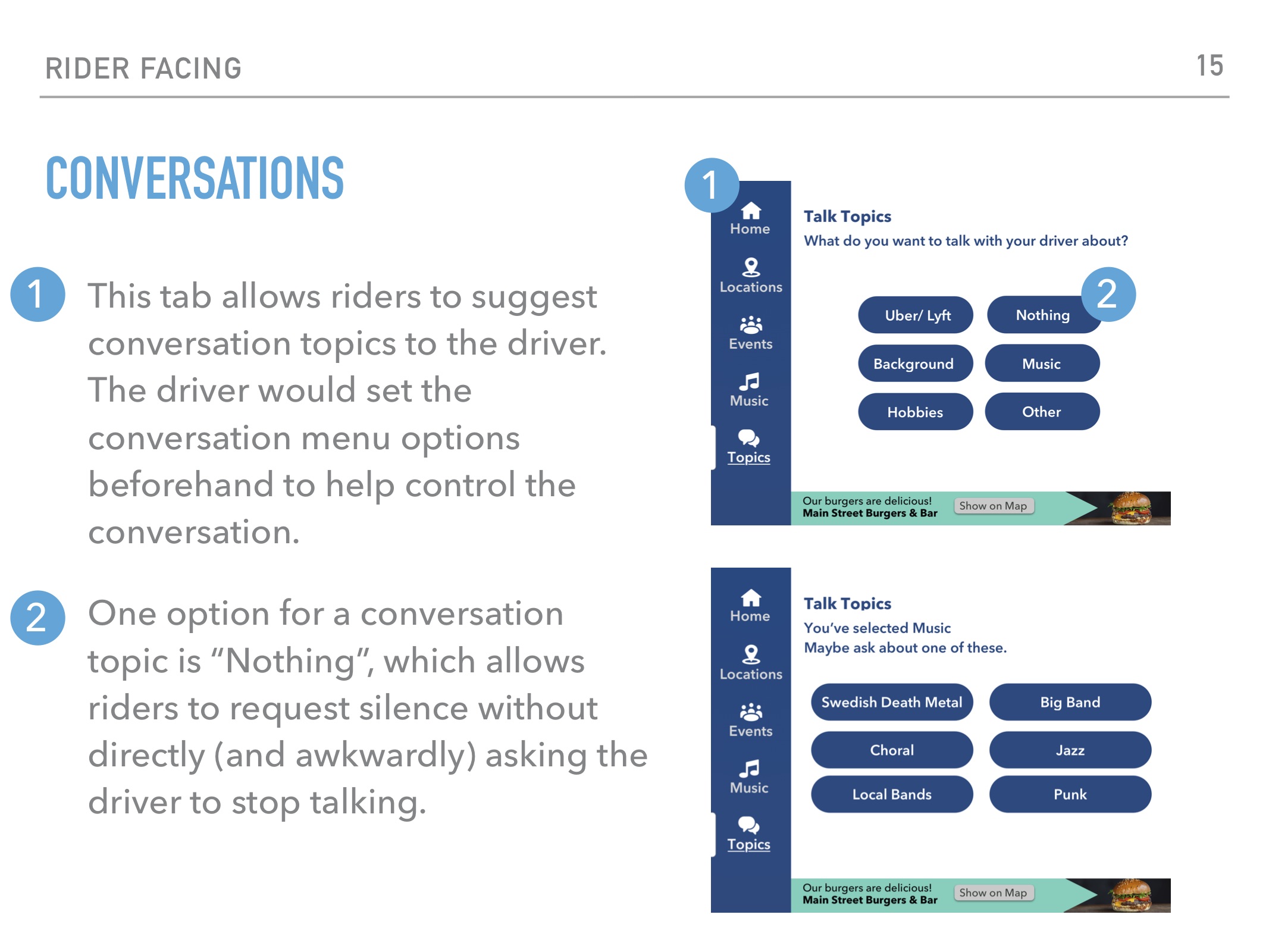voice UI Mobile application
edwards.ai
project overview
The Client
To demonstrate the company’s capabilities to investors and inspire clients, Edwards.ai is internally developing a proof-of-concept application that will leverage its technology capabilities while solving a relevant, relatable problem in the rideshare industry. Currently, drivers for rideshare services (e.g., Lyft or Uber) often struggle to make money, resulting in significant driver turnover. Edwards.ai would like to develop an application that includes a variety of features intended to help drivers be more efficient, increase safety, and provide them with new sources of revenue, while also enhancing the rider experience.
The Opportunity
Design a multi-feature mobile application, highlighting the artificial intelligence technological capabilities of Edwards.ai in order to provide a tool that significantly increases safety, revenue, and the holistic experience of being a driver in the rideshare industry.
Methods
Competitive Analysis
Directed Storytelling
Kano Model Analysis
Iterative Prototyping
Usability Testing
Persona
Deliverables
Annotated Wireframes
Interactive Prototypes
Research Findings Report
Research
Discovery Plan
Competitive Analysis
User Interveiw
THE LANDSCAPE
The discovery phase of this project consisted of conducting a vast amount of research in order to fully uncover a holistic view into the rideshare industry and how artificial intelligence capabilities like deep learning and natural language processing could increase the experience of the rideshare industry for both drivers and passengers.
The team looked at competitors in the rideshare industry to gather insights on what is currently available, what is lacking, and what could be enhanced by AI technologies. We also conducted research on AI capabilities, implementations, and how users currently understand AI. Through interviews and surveys, we gained an understanding of both drivers and riders needs, goals, and view of introducing AI functionalities to the rideshare industry.
Feature Ideation
Persona Building
User Balance
Enjoyment, Privacy, & Safety
After conducting interviews with riders and drivers uncovering the opportunity spaces, the team ideated features that could be introduced to users in a Kano Analysis. Along with assessing the desirability of features, we wanted to understand how drivers and passengers balanced the value of privacy with the value of safety and enjoyment.
While testing concierge services and facial recognition, there were staggering numbers against them. Fewer than 25% of research participants were willing to pay for extra amenities while riding, and around 33% of those users were only considering emergencies. On the facial recognition side, 63% were strongly against the use of facial recognition, leaving comments such as, “This is super creepy,” and, “Absolutely not.”
With a bit of understanding, the team started creating a persona based off of the research data and analysis to solidify the user goals and current pain points in order to direct the upcoming design decisions.
Design Process
Team Collaboration
Initial Wireframes
Building Out Concepts
Connecting Voice, Visuals, and function
Assessing an interface that users can’t see is difficult, so we researched industry standards and conducted usability evaluations to learn how users expect to interact with a voice interface and what we can do to guide them. With an understanding of how voice and visuals can overlap, we began prototyping an interface alongside our AI brand personality Ed. The goal was to create an interface and personality that was sophisticated, classy, and friendly.
I started creating wireframes of particular features that were deemed desirable through the Desirability Surveys and Kano Analysis. Mapping out the user flow of the visual interface, I worked to incorporate voice through particular phrases that met industry and brand standards, along with earcons that could communicate particular information through notification sounds instead of utilizing a lengthy verbal statement to decrease distractions and increase understanding.
Prototypes
Driver designs
We created designs that highlighted the goals of both the users. The application is an all-in-one tool for rideshare drivers that features Edward, an AI that can assist the drivers throughout their day. The features built in are hands-free responses to calls and texts, alternative route notifications, object detection, automotive maintenance tracking, switching between other applications, and a financials section that assists in tracking income, expenses, and revenue.
For more a more detailed view, refer to the annotated wireframes or the interactive demonstration in the video below.
Passenger Designs
We also designed a passenger facing part of the application that could be an additional source of revenue for drivers while also enhancing the passengers experience. Features that were influenced by research and implemented into the designs are a conversation topic and level choice, GPS indication of your route and suggested places to visit, local events happening near your destination, and the ability to select the music.
Deliverables
annotated wireframes
In order to hand off our prototype to Edwards.ai, we created annotated wireframes detailing some of the major features incorporated throughout our project.
Client PRESENTATIONS
After completing the Proof of Concept Prototype, the team and I gave a presentation to the clients summarizing our researching findings, design process, and an interactive walkthrough of the prototype. Above is a video representation of the walkthrough demonstrating the voice interactions between our persona Penny and the AI Ed.
